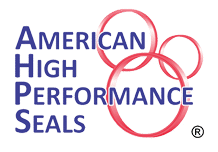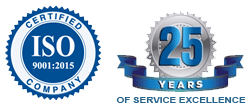Pressure Rating
The maximum pressure rating of seals is greatly influenced by many factors:
– Extrusion gaps, clearances:
The extrusion gap is defined as the maximum radial clearance on one side between the seal housing opposite of pressure and the sealing surface. The extrusion gap is the most pressure-limiting factor to any seal. Larger extrusion gaps will always reduce a seal’s pressure capability.
– Wear rings:
The use of wear rings always leads to larger extrusion gaps compared to a close-tolerance sliding bearing design without wear rings. The above-metal exposed portion of the wear ring and tolerances are the dominating factors for the need for larger clearances between the two sealing surfaces.
– Seal material:
Typically, a harder seal material will increase the extrusion resistance and pressure rating of a seal compared to a softer seal material. The typical hardness range for dynamic elastomeric hydraulic seals is 85-95 Shore A (similar to car tires). AHPSeals offers a variety of high-performance sealing materials in different hardness to meet the most challenging high-pressure sealing applications.
– Back-up rings:
The proper design of a seal with a back-up ring will increase the pressure rating of a seal as long as the back-up ring is made of material with a higher modulus than the seal (typically noted as a harder material). AHPSeals offers specific rod and piston seals with integrated back-up rings to increase pressure capability.
– Temperature:
Higher operating temperatures will soften the seal and back-up ring material, reducing its pressure capability. This affects most traditional seal materials when operating above 70% of their specified maximum operating temperature. Some of our high-performance sealing materials are designed to operate at 90% of their specified temperature without significant loss in hardness (-0.1%). Conversely, lower operating temperatures can increase the extrusion resistance of seal materials.

